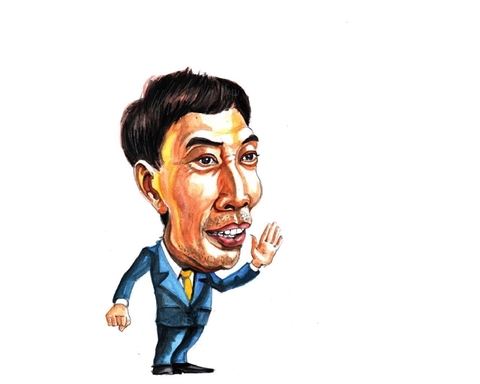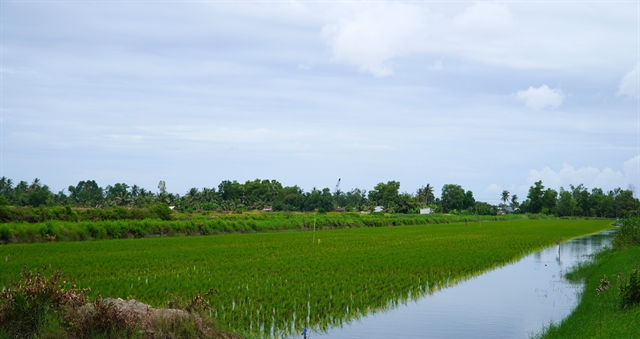 Economy
Economy


|
| Võ Trí Thành |
Việt Nam is entering a new decade with the aspiration to develop and become a prosperous society, and a middle-income country by 2030 and high-income country by 2045.
Amid the rapid development of Industry 4.0, the country must not only catch up but also advance with global trends, promoting reforms, boosting digital transformation and integrating deeper into global commerce.
The country celebrates the 90th founding anniversary of the Communist Party of Việt Nam (CPV) today (February 3, 1930-2020), and its spectacular economic development is an important gauge of the Party’s successful leadership. The Party initiated and led the Đổi mới (Renovation) process which started from changes to economic outlook. The shift of the economy from a centrally planned model to a socialist-oriented market economy, promoting industrialisation and modernisation and active international integration, proved a big success to Việt Nam.
The depletion of the economy under the centrally planned model forced Việt Nam to undertake reforms at the end of the 1970s and early 1980s.
In this period, the ‘bottom-up’ reforms could be seen in the recognition and legalisation of people’s spontaneous measures to operate outside the planned economy, such as ‘illicit contracting’ in agriculture and ‘fence breaking’ in the manufacturing sector, creating incentives for individual producers.
However, Việt Nam’s turning point in its economic development only happened when the Đổi mới policy was introduced in 1986 and especially the radical market-oriented reform in 1989.
From recognition of the existence and essential role of a multi-ownership structure in the economy, Việt Nam adopted a radical and comprehensive reform package including enhancing freedom of choice for economic units and competition, almost complete price liberalisation, large devaluation and unification of exchange rates, agricultural reforms through recognition of farming household as a basic economic unit and long-term land-use rights in the late 1980s.
Several measures to encourage the private sector to participate in production and distribution along with attempts to make State-owned enterprises (SOEs) more viable by reducing subsidies and giving them greater autonomy proved to be efficient in increasing output and expanding services and construction.
The 1989 market-oriented reform package is considered very successful in the context that the country was still under an embargo.
Renovation progress was supported by the resumption of official development assistance (ODA), normalisation of diplomatic relations with the US and the country becoming a member of the Association of Southeast Asian Nations (ASEAN) in 1995.
Despite challenges during the Asian financial crisis in 1997-98 and somewhat skepticism concerning integration, Việt Nam was committed to continuing the renovation process.
The Enterprise Law that came into force in early 2000 also helped develop the private sector and attract foreign direct investment (FDI). Việt Nam-US relations also hit a higher level thanks to a bilateral trade agreement inked in 2000.
In 2007, Việt Nam joined the World Trade Organisation (WTO). Since then, the country has signed free trade deals with many countries and regions, including high-standard pacts such as Comprehensive and Progressive Agreement for Trans-Pacific Partnership (CPTPP) and the EU-Việt Nam Free Trade Agreement (EVFTA).
Over the last 35 years, Việt Nam has seen four major transformations in its economic development history.
First, from a poor and low-income country, Việt Nam emerged to be a middle-income country in 2010. The country has set targets of becoming a high middle-income country by 2030 and high-income by 2045.
It is also among the top countries in implementing the United Nations’ Millennium Development Goals of hunger eradication and poverty reduction. The middle class has developed rapidly, spurring consumption and national economic development.
Second, the economy is transitioning towards industry and service. In the late 1980s, agriculture contributed the largest percentage to GDP, at about 50 per cent, but now the rate is below 15 per cent.
Third, from a closed economy, Việt Nam has become one of the most open economies in the world in terms of trade and FDI.
Fourth, the country has adopted a market-oriented model. The private economic sector has witnessed major changes with a better understanding of market rules. About 760,000 enterprises and 4-5 million household businesses are operating. Many big corporations have established brands in the country and reached the world stage.
Though the country is still facing challenges concerning institutions, infrastructure, manpower and sustainable development, Việt Nam has great ambitions to transition its economy to productivity and innovation-based, fostering reforms for inclusive development, catching up and striding along with global trends.
To realise those targets, it is vital that the country learns from the lessons of its past.
Some of the most important things are the pragmatic and practical policies which handle bottlenecks in conjunction with trends. For example, the bottom-up reforms launched in the early 1980s aimed to satisfy the demand of both people and the political situation at that time, unleashing the development potential of the economy.
Reforms should be consistent with the process of international integration. Opening the economy poses certain risks but it should be done in line with institutional reforms to provide an impetus for development.
Many Vietnamese people are still obsessed with grievances in the past, including inflation problem when prices soared by 700 per cent in the 1980s and the Government scrambled to rein in price hikes.
Such situations emphasise a focus on policy harmony when economic development must go in hand with social stability, environmental protection and quality development. This is also a key policy of the Government in the next period of development.
Lessons from the past showed the Government should not only prioritise hunger elimination and poverty reduction and support the most vulnerable groups, but also interact with the market and create a legal foundation to facilitate business operation.
Future development will be prone to innovation and industrialisation. Việt Nam’s advantages of natural resources and cheap labour costs will diminish and be replaced by productivity and innovation.
With more than 4,000 years of building and defending the country, the Vietnamese people do not lack creativity. The most important thing is to create an environment to nurture and develop innovation and the Government’s policies should focus on building the national innovation system, debate-prone environment, merit-based mechanism, renovating education and attracting talent.
Last, any successful reforms are much dependent on the will, determination and accountability of the Government’s leaders who need to recognise trends, know how to combine resources and manage risks and take aggressive action.
Achievements from Đổi mới, though an important fulcrum, are not enough to ensure the success of Việt Nam’s development process in the future. We have advantages and challenges, but the imperative requirement for the country is to accelerate reforms to a new height.
Time does not wait, we must take action and Việt Nam has a good foundation to do that. – VNS
* Võ Trí Thành is a senior economist at the Central Institute for Economic Management (CIEM) and a member of the National Financial and Monetary Policy Advisory Council. The holder of a doctorate in economics from the Australian National University, Thanh mainly undertakes research and provides consultation on issues related to macroeconomic policies, trade liberalisation and international economic integration. Other areas of interest include institutional reforms and financial systems.




